Product Overview
† commercial product
Sildenafil is a vasoactive agent that is commonly prescribed to treat erectile dysfunction (impotence) in men, and to reduce symptoms in patients with pulmonary arterial hypertension (PAH). By decreasing vascular resistance and relaxing muscles, sildenafil increases blood flow to particular areas of the body including the penis. Sildenafil is generally taken 30 to 60 minutes prior to sexual intercourse, sildenafil troche may be taken up to 10 minutes before intercourse.
Sildenafil is regarded as the most popular erectile dysfunction drug. Sildenafil was developed by a group of pharmaceutical chemists at Pfizer’s facility in Kent, England who worked together to synthesize sildenafil. The medication was initially formulated to treat hypertension (a symptom of ischaemic heart disease) and chest pains caused from the inadequacy of the blood circulation to the heart. The drug was tried on men in Morriston Hospital (Swansea), in 1991 and 1992. Its clinical trials were conducted under the supervision of Ian Osterloh, who suggested that the drug had very little effects on treating angina, but effected significant changes in penile erections. Pfizer decided to commercialize the drug as a treatment for erectile dysfunction.
Sildenafil belongs to the phosphodiesterase type 5 (PDE5) inhibitors drug class. Sildenafil was originally developed as an antianginal agent but was found to be more effective in treating erectile dysfunction (ED). Sildenafil continues to be studied clinically to assess its utility in treating sexual dysfunction in females, but initial studies have found sildenafil to provide results similar to placebo in women. In regard to ED, sildenafil was tested in more than 4000 men in 21 clinical trials. The average age of these men was 55 years and they had ED for an average of 5 years before entering the study. Sildenafil was effective in roughly 70% of subjects. Response rates of 90% have been achieved in trials of male patients with psychogenic ED. Sildenafil may also be effective in male patients with ED related to diabetes mellitus or due to pelvic fracture urethral disruption.[1][2] Sildenafil has been shown to be effective and well tolerated in patients on multidrug antihypertensive regimens and not associated with additional safety risks in these patients.[3] According to ED treatment guidelines, oral phosphodiesterase type 5 inhibitors (PDE5 inhibitor) are considered first-line therapy.[4] Final FDA approval for sildenafil for the treatment of ED was granted in March 1998.
Shortly after approval for ED, studies showed sildenafil was effective in treating patients with pulmonary arterial hypertension (PAH).[5][6][7] Sildenafil improved exercise capacity as well as mean pulmonary artery pressure and other measures of cardiac function in patients with PAH. Sildenafil is the first oral therapy approved for treating early stages of PAH. Although preliminary data from 12 patients with sickle cell anemia showed a decrease in PAH, a larger clinical trial (n = 134) investigating the use of sildenafil for pulmonary hypertension in adults with sickle cell anemia was stopped early due to an increased risk of severe adverse effects, especially sickle cell pain crises, compared to placebo (38% vs. 8%, respectively). The reason for the increased risk of pain is unknown; however, in the initial trial, patients were aggressively treated with transfusions and hydroxyurea to control crises; the larger trial offered no intervention for crises. Sildenafil has also shown efficacy in treating altitude sickness.[5][6][8] The oral formulation of sildenafil (Revatio) was approved by the FDA for treatment of pulmonary arterial hypertension (PAH) in June 2005; the injectable formulation was approved in November 2009.
Sildenafil is a selective inhibitor of cyclic guanosine monophosphate (cGMP)-specific phosphodiesterase type 5 (PDE5). The physiologic mechanism of erection of the penis involves release of nitric oxide (NO) in the corpus cavernosum during sexual stimulation. Nitric oxide then activates the enzyme guanylate cyclase, which results in increased levels of cGMP. Cyclic guanosine monophosphate causes smooth muscle relaxation in the corpus cavernosum thereby allowing inflow of blood; the exact mechanism by which cGMP stimulates relaxation of smooth muscles has not been determined. Phosphodiesterase type 5 is responsible for degradation of cGMP in the corpus cavernosum. Sildenafil enhances the effect of NO by inhibiting PDE5 thereby raising concentrations of cGMP in the corpus cavernosum. Sildenafil has no direct relaxant effect on isolated human corpus cavernosum and, at recommended doses, has no effect in the absence of sexual stimulation. In vitro studies show that sildenafil is selective for PDE5 and its effect is more potent on PDE5 than on other known phosphodiesterases (>80-fold for PDE1, >1,000-fold for PDE2, PDE3, and PDE4). The approximately 4,000-fold selectivity for PDE5 versus PDE3 is important because PDE3 is involved in control of cardiac contractility. Sildenafil is one-tenth as potent for PDE6, an enzyme found in the retina, as it is for PDE5; this lower selectivity is thought to be the basis for abnormalities related to color vision observed with higher doses or plasma concentrations of the drug.
As reported by the manufacturer, the pharmacodynamic response to sildenafil was assessed in eight double-blind, placebo-controlled crossover studies of patients with either organic or psychogenic erectile dysfunction. In these studies sexual stimulation resulted in improved erections, as assessed by penile plethysmography, after sildenafil administration compared with placebo. Most studies evaluated the efficacy of sildenafil approximately 60 minutes post dose. The erectile response, as determined by penile plethysmography, generally increased with increasing sildenafil dose and plasma concentration. The time course of effect was examined in one study. The effects of sildenafil were evident for up to 4 hours but the response was diminished compared to 2 hours.
Sildenafil can inhibit PDE5 present in esophageal smooth muscle, lung tissue, and brain tissue. Inhibition of PDE5 in lung tissue results in relaxation of pulmonary vascular smooth muscle and subsequently pulmonary vasodilation, thereby making sildenafil an effective agent in treating pulmonary hypertension. Inhibition of PDE5 present in esophageal smooth muscle can cause a marked inhibition of esophageal motility as well as a reduction in lower esophageal sphincter (LES) tone. These effects may be beneficial in certain motor disorders involving the esophagus such as diffuse spasm, nutcracker esophagus, and hypertensive LES. However, the reduction in LES tone can worsen the symptoms of gastroesophageal reflux disease (GERD).[9] Sildenafil has been shown to cross the blood-brain barrier and inhibit PDE5 in cerebral blood vessels. The areas of the brain that have the highest activity of PDE5 are the hippocampus, cerebral cortex, and basal ganglia. Although clinical studies have not proven this effect, inhibition of PDE5 by sildenafil in the brain may result in emotional, neurological, and psychological effects (see Adverse Reactions).
Who should not take this medication? Do not take this medicine with any of the following medications: cisapride; methscopolamine nitrate; nitrates like amyl nitrite, isosorbide dinitrate, isosorbide mononitrate, nitroglycerin; nitroprusside; other medicines for erectile dysfunction like tadalafil, vardenafil; other sildenafil products. Your health care provider needs to know if you have any of these conditions: bleeding disorders; eye or vision problems, including retinitis pigmentosa; Peyronie’s disease, or history of priapism; heart disease, angina, a history of heart attack, irregular heartbeats, or other heart problems; high or low blood pressure; history of blood diseases; history of stomach bleeding; kidney disease; liver disease; stroke; an unusual or allergic reaction to sildenafil or other products. If you notice any changes in your vision while taking this drug, call your healthcare provider immediately. If you experience symptoms of nausea, dizziness, chest pain or arm pain upon initiation of sexual activity after taking this medicine, you should refrain from further activity and call your healthcare provider immediately. Do not use alcohol while using this medicine. Using this medicine does not protect you or your partner against HIV infection or other sexually transmitted infections.
Sildenafil is contraindicated in patients with a known hypersensitivity to any component of the tablet or injection. The safety and efficacy of combinations of sildenafil with other treatments for erectile dysfunction have not been studied. Therefore, the use of such combinations is not recommended.
The use of sildenafil is not recommended in patients with pulmonary veno-occlusive disease (PVOD). Administration of sildenafil in this population may significantly worsen cardiovascular status. In addition, if signs of pulmonary edema occur during sildenafil administration, the possibility of associated PVOD should be considered.
Sildenafil is contraindicated in patients who are currently on nitrate/nitrite therapy (see Drug Interactions). Consistent with its known effects on the nitric oxide/cGMP pathway, sildenafil was shown to potentiate the hypotensive effects of organic nitrates and nitrites. Patients receiving nitrates in any form are not to receive sildenafil. This includes any patient who receives intermittent nitrate therapies. It is unknown if it is safe for patients to receive nitrates once sildenafil has been administered.
The following factors are associated with up to an eight time increase in plasma concentrations of sildenafil compared with healthy subjects: geriatric patients (40% increase in sildenafil AUC), hepatic disease (e.g., cirrhosis, 80% increase), severe renal impairment (i.e., CrCl < 30 ml/min, 100% increase), concomitant use of potent cytochrome P450 3A4 inhibitors (erythromycin (182% increase), itraconazole, ketoconazole, saquinavir (210% increase)). Because higher plasma concentrations may increase the incidence of adverse reactions, the sildenafil starting dose should be 25 mg in these patients. Additionally, ritonavir greatly increased the systemic concentrations of sildenafil in a study of healthy, non-HIV infected volunteers (11-fold increase in AUC). Based on these pharmacokinetic data, it is recommended not to exceed a maximum single dose of 25 mg sildenafil in a 48 hour period.
There is a degree of cardiac risk associated with sexual activity; therefore, prescribers should evaluate the cardiovascular status of their patients prior to initiating any treatment for erectile dysfunction. Over 75 deaths due to cardiovascular events have been reported in association with sildenafil use. In a study conducted at the Mayo Clinic, sildenafil was shown to have limited cardiovascular effects during exercise in men with known or probable coronary artery disease. The study reported that sildenafil had no effect on exercise capacity or the hemodynamic response to exercise. Systolic blood pressure was reduced an average of 7 mmHg compared to baseline.[10] Another study showed that sildenafil inhibited beta-adrenergic-stimulated systolic function. Using dobutamine in healthy volunteers, investigators reported that sildenafil suppressed the cardiac response to dobutamine but had minimal effect under resting conditions. It was also reported that the effects of sildenafil were independent of cardiac afterload or preload changes.[11] Health care professionals should consider whether the individual would be adversely affected by vasodilatory events. In particular, caution should be used if sildenafil is prescribed in the following patient groups: patients who have suffered a myocardial infarction, stroke, or life-threatening cardiac arrhythmias in the last 6 months; patients with resting hypotension (BP < 90/50) or resting hypertension (BP > 170/100); patients with fluid depletion; patients with cardiac disease, heart failure or coronary artery disease which causes unstable angina. The American College of Cardiology recommends that sildenafil be used with caution in the following: patients with active coronary ischemia who are not taking nitrates (e.g., positive exercise test for ischemia); patients with congestive heart failure and borderline low blood pressure and borderline low volume status; patients on a complicated, multidrug, antihypertensive program; and patients taking drugs that can prolong the half-life of sildenafil (see Drug Interactions). However, one study reported that sildenafil was effective and well tolerated in patients on multidrug antihypertensive regimens and was not associated with additional safety risks in these patients.[3] Patients with left ventricular outflow obstruction (e.g., aortic stenosis, idiopathic hypertrophic subaortic stenosis) and those with severely impaired autonomic control of blood pressure can be particularly sensitive to the actions of sildenafil and other vasodilators. Doses of sildenafil above 25 mg should not be given within 4 hours of an alpha-blocker (e.g., doxazosin, see Drug Interactions).
Prolonged erections greater than 4 hours and priapism (painful erections greater than 6 hours in duration) have been associated with PDE5 inhibitor administration. Priapism, if not treated promptly, can result in irreversible damage to the erectile tissue. Patients who have an erection lasting greater than 4 hours, whether painful or not, should seek emergency medical attention. Sildenafil and other agents for the treatment of erectile dysfunction should be used with caution in patients with penile structural abnormality (such as angulation, cavernosal fibrosis or Peyronie’s disease), or in patients who have conditions which may predispose them to priapism (such as such as sickle cell anemia, leukemia, multiple myeloma, polycythemia, or a history of priapism).[12][13] However, in one retrospective study, treatment with sildenafil did not cause any worsening deformity or progression of Peyronie’s disease.[14]
Patients should be reminded that sildenafil, when used for erectile dysfunction, offers no protection against sexually transmitted disease. Counseling of patients about protective measures, including the prevention of transmission of human immunodeficiency virus (HIV) infection, should be considered.
Sildenafil has no effect on bleeding time when taken alone or with aspirin. In vitro studies with human platelets indicate that sildenafil potentiates the antiaggregatory effect of sodium nitroprusside (a nitric oxide donor). There is no safety information on the administration of sildenafil to patients with a coagulopathy or active peptic ulcer disease. Therefore, sildenafil should be administered with caution to these patients.
Use sildenafil cautiously in patients with preexisting visual disturbance. Post-marketing reports of sudden vision loss have occurred with phosphodiesterase inhibitors. Vision loss is attributed to a condition known as non-arteritic anterior ischemic optic neuropathy (NAION), where blood flow is blocked to the optic nerve. Patients with a history of NAION are at increased risk for recurrence. Only use a PDE5 inhibitor in these individuals if the anticipated benefit outweighs the risk. Patients with low cup to disc ratio (‘crowded disc’) are also at increased risk; however, this condition is uncommon, and there is insufficient evidence to support screening of prospective users of a PDE5 inhibitor. There is no safety information on the administration of sildenafil to patients with known hereditary degenerative retinal disorders, including retinitis pigmentosa. A minority of patients with the inherited condition retinitis pigmentosa have genetic disorders of retinal phosphodiesterases. Therefore, sildenafil should be used with caution in these patients.[12][15]
Sildenafil is classified as FDA pregnancy risk category B. There are no adequate and well-controlled studies of sildenafil in pregnant women. According to the manufacturers, Revatio should be used during pregnancy only if clearly needed; Sildenafil is not indicated for use in women.[12][15]
It is not known if sildenafil or its metabolites are excreted in human breast milk. The prescribing information for Revatio recommends caution when the drug is administered to a nursing mother; Sildenafil is not indicated for use in women.[12][15] Consider the benefits of breast-feeding, the risk of potential infant drug exposure, and the risk of an untreated or inadequately treated condition. If a breast-feeding infant experiences an adverse effect related to a maternally ingested drug, healthcare providers are encouraged to report the adverse effect to the FDA.
In 2012, the FDA recommended against the use of sildenafil for the treatment of pulmonary hypertension in neonates, infants, children, or adolescents based on the results of a long-term pediatric clinical trial showing an increased risk of death in pediatric patients receiving a high dose of sildenafil compared to those receiving a low dose (HR 3.9, p = 0.007).[15][16] The FDA has since clarified its recommendation stating that there may be patients in which the benefits of sildenafil therapy outweigh the risks, such as when other treatment options are limited and when close monitoring is available, and advises health care providers to weigh the risk-benefit profile for individual patients when deciding whether to initiate sildenafil.[17] Despite the FDA’s caution against use, The Pediatric Pulmonary Hypertension Network (PPHNet) recommends cautious initiation and titration of sildenafil, avoidance of high doses (> 20 mg PO 3 times daily), and consultation and/or referral to providers experienced in the treatment of pulmonary hypertension in pediatric patients. PPHNet also recommends against the abrupt discontinuation of sildenafil in pediatric patients currently receiving it as this could lead to clinical worsening or death. The FDA warning is based on chronic use of sildenafil as monotherapy and, therefore, does not apply to short-term use in critically ill patients.[18]
Sildenafil should be used cautiously in patients with gastroesophageal reflux disease (GERD) or hiatal hernia associated with reflux esophagitis. Sildenafil can decrease the tone of the lower esophageal sphincter and inhibit esophageal motility.[9]
Safety and efficacy of sildenafil has not been established in the treatment of pulmonary hypertension secondary to sickle cell disease. Vaso-occlusive crisis (sickle-cell crisis) requiring hospitalization has been reported more frequently in patients with pulmonary hypertension secondary to sickle cell disease who received sildenafil than by those who received placebo. Also, when using for erectile dysfunction, use sildenafil with caution in patients with sickle cell disease because the risk of priapism may be increased.[12][15]
This list may not include all contraindications.
Possible interactions include: certain drugs for high blood pressure; certain drugs for the treatment of HIV infection or AIDS; certain drugs used for fungal or yeast infections, like fluconazole, ketoconazole, and voriconazole; cimetidine; erythromycin; rifampin. This list may not describe all possible interactions. Give your health care provider a list of all the medicines, herbs, non-prescription drugs, or dietary supplements you use. Some items may interact with your medicine.
NOTE: Sildenafil is metabolized principally by the hepatic cytochrome P450 (CYP) 3A4 (major route) and 2C9 (minor route) isoenzymes.[19] Inhibitors of these isoenzymes may reduce sildenafil clearance. Increased systemic exposure to sildenafil may result in an increase in sildenafil-induced adverse effects. The manufacturer recommends dosage reduction in patients receiving potent cytochrome CYP3A4 inhibitors.[20]
Consistent with its known effects on the nitric oxide/cGMP pathway, sildenafil was shown to potentiate the hypotensive effects of nitrates. Deaths have been reported in men who were using sildenafil while taking nitrate or nitrite therapy for angina. Sildenafil administration to patients who are concurrently using organic nitrates or nitrites in any form is contraindicated.[20]
The safety and efficacy of tadalafil administered concurrently with any other phosphodiesterase (PDE5) inhibitors, such as sildenafil, has not been studied. The manufacturer of tadalafil recommends to avoid the use of tadalafil with any other PDE5 inhibitors.[21]
Coadministration of sildenafil, tadalafil or vardenafil and other organic nitrates has been shown to potentiate the hypotensive effects of nitrates; concomitant administration of these drugs for erectile dysfunction with nitrates is contraindicated.[20][22][23] Many methscopolamine-containing products list methscopolamine nitrate as the ingredient. Therefore, the concomitant use of sildenafil, tadalafil or vardenafil and products which contain methscopolamine nitrate is not recommended.
Sildenafil is metabolized principally by cytochrome P450 (CYP) 3A4 (major route) and 2C9 (minor route) isoenzymes. Cimetidine is a known inhibitor of hepatic CYP enzymes and reduces the metabolism of sildenafil. Cimetidine (800 mg) caused a 56% increase in plasma sildenafil concentrations when coadministered with sildenafil 50 mg to healthy volunteers. Population data from patients in clinical trials also indicate a reduction in sildenafil clearance when it was coadministered with cimetidine. If possible, cimetidine use should be avoided in patients who take sildenafil.[20]
Etravirine is an inducer of CYP3A4; coadministration may result in decreased sildenafil concentrations. Dosage adjustments may be needed based on clinical efficacy.[24]
Particular caution should be used when prescribing phosphodiesterase type 5 (PDE5) inhibitors to patients receiving ritonavir. Coadministration of ritonavir with sildenafil results in an 11-fold increase of sildenafil AUC; one death has been reported in a patient who received sildenafil in combination with ritonavir and Fortovase.[25] Substantially increased sildenafil plasma concentrations may result in increased associated adverse events including hypotension, syncope, visual changes, and prolonged erection. If coadministered when sildenafil is used for erectile dysfunction, a reduced dose of sildenafil 25 mg every 48 hours with increased monitoring for adverse reactions is recommended.[26][27] When sildenafil is used for the treatment of pulmonary arterial hypertension (PAH), the use of ritonavir is contraindicated because a safe and effective dose has not been established.[26]
Particular caution should be used when prescribing phosphodiesterase type 5 (PDE5) inhibitors to patients receiving saquinavir. Sildenafil is contraindicated for use with the anti-retroviral protease inhibitors when used for pulmonary arterial hypertension (PAH).[28] If sildenafil is coadministered with saquinavir and used for erectile dysfunction, use sildenafil at reduced doses of 25 mg every 48 hours with increased monitoring for adverse reactions.[27][28] Coadministration of saquinavir, especially when ‘boosted’ with ritonavir, with PDE5 inhibitors is expected to substantially increase their plasma concentrations and may result in increased associated adverse events including hypotension, syncope, visual changes, and prolonged erection. One death has been reported in a patient who received sildenafil in combination with ritonavir and saquinavir (Fortovase).[25]
Particular caution should be used when prescribing phosphodiesterase type 5 (PDE5) inhibitors to patients receiving amprenavir. Coadministration with sildenafil results in a 210% increase in sildenafil AUC. Sildenafil is contraindicated for use with the anti-retroviral protease inhibitors when used for pulmonary arterial hypertension (PAH).[29] If sildenafil is coadministered with amprenavir and used for erectile dysfunction, use sildenafil at reduced doses of 25 mg every 48 hours with increased monitoring for adverse reactions.[27][30] Substantially increased sildenafil plasma concentrations may result in increased associated adverse events including hypotension, syncope, visual changes, and prolonged erection.[27][30]
Particular caution should be used when prescribing phosphodiesterase type 5 (PDE5) inhibitors to patients receiving fosamprenavir. Sildenafil is contraindicated for use with the anti-retroviral protease inhibitors when used for pulmonary arterial hypertension (PAH).[29] If sildenafil is coadministered with fosamprenavir and used for erectile dysfunction, use sildenafil at reduced doses of 25 mg every 48 hours with increased monitoring for adverse reactions.[27][29] Coadministration with sildenafil results in a 210% increase in sildenafil AUC. Substantially increased sildenafil plasma concentrations may result in increased associated adverse events including hypotension, syncope, visual changes, and prolonged erection.[27][29]
Particular caution should be used when prescribing phosphodiesterase type 5 (PDE5) inhibitors to patients receiving atazanavir. Sildenafil is contraindicated for use with the anti-retroviral protease inhibitors when used for pulmonary arterial hypertension (PAH).[31] If sildenafil is coadministered with atazanavir and used for erectile dysfunction, use sildenafil at reduced doses of 25 mg every 48 hours with increased monitoring for adverse reactions.[27][31] Coadministration of atazanavir with PDE5 inhibitors is expected to substantially increase their plasma concentrations and may result in increased associated adverse events including hypotension, syncope, visual changes, and prolonged erection.[27][31]
Particular caution should be used when prescribing phosphodiesterase type 5 (PDE5) inhibitors to patients receiving darunavir. Sildenafil is contraindicated for use with the anti-retroviral protease inhibitors when used for pulmonary arterial hypertension (PAH).[32] When sildenafil is coadministered with darunavir and used for erectile dysfunction, use sildenafil at reduced doses of 25 mg every 48 hours with increased monitoring for adverse reactions.[27][32] Coadministration of darunavir with PDE5 inhibitors is expected to substantially increase their plasma concentrations and may result in increased associated adverse events including hypotension, syncope, visual changes, and prolonged erection.[27][32]
Sildenafil is contraindicated for use with cobicistat when used for pulmonary arterial hypertension (PAH). If used for erectile dysfunction, the dose of sildenafil should not exceed 25 mg every 48 hours with increased monitoring for adverse reactions during times of coadministration. Concurrent use is expected to substantially increase the sildenafil plasma concentrations and may result in increased associated adverse events including hypotension, syncope, visual changes, and prolonged erection.[33]
Sildenafil is contraindicated for use with atazanavir; cobicistat when used for pulmonary arterial hypertension (PAH). If used for erectile dysfunction, the dose of sildenafil should not exceed 25 mg every 48 hours with increased monitoring for adverse reactions during times of coadministration. Concurrent use is expected to substantially increase the sildenafil plasma concentrations and may result in increased associated adverse events including hypotension, syncope, visual changes, and prolonged erection.[34]
Sildenafil is contraindicated for use with darunavir; cobicistat when used for pulmonary arterial hypertension (PAH). If used for erectile dysfunction, the dose of sildenafil should not exceed 25 mg every 48 hours with increased monitoring for adverse reactions during times of coadministration. Concurrent use is expected to substantially increase the sildenafil plasma concentrations and may result in increased associated adverse events including hypotension, syncope, visual changes, and prolonged erection.[35]
Particular caution should be used when prescribing phosphodiesterase type 5 (PDE5) inhibitors to patients receiving indinavir. Altered indinavir plasma concentrations may result. Additionally, sildenafil is contraindicated for use with the anti-retroviral protease inhibitors when used for pulmonary arterial hypertension (PAH).28731 When sildenafil is coadminstered with indinavir and used for erectile dysfunction, use sildenafil at reduced doses of 25 mg every 48 hours with increased monitoring for adverse reactions.[27] Substantially increased PDE5 inhibitor plasma concentrations are seen and may result in increased associated adverse events including hypotension, syncope, visual changes, and prolonged erection. In a small pharmacokinetic study, the coadministration of a single dose of sildenafil (25 mg) to patients receiving indinavir (800 mg every 8 hours) resulted in markedly increased sildenafil AUC values (340% increase), as compared to historical controls. The Cmax for indinavir was increased by 48% and the 8-hour AUC was increased 11% following concurrent administration. In two of the six subjects, prolonged clinical effects of sildenafil were noted for 72 hours after a single dose of sildenafil.[36]
Particular caution should be used when prescribing phosphodiesterase type 5 (PDE5) inhibitors to patients receiving lopinavir; ritonavir (Kaletra). Coadministration of lopinavir; ritonavir (Kaletra) with these drugs is expected to substantially increase their plasma concentrations and may result in increased associated adverse events including hypotension, syncope, visual changes, and prolonged erection. Lopinavir; ritonavir is contraindicated for use with sildenafil when sildenafil is used for the treatment of pulmonary arterial hypertension (PAH).[37] If coadministered when sildenafil is used for erectile dysfunction, use sildenafil at reduced doses of 25 mg every 48 hours with increased monitoring for adverse reactions.[27][37]
Particular caution should be used when prescribing phosphodiesterase type 5 (PDE5) inhibitors to patients receiving nelfinavir. Sildenafil is contraindicated for use with the anti-retroviral protease inhibitors when used for pulmonary arterial hypertension (PAH).[38] When sildenafil is coadministered with nelfinavir and used for erectile dysfunction, use sildenafil at reduced doses of 25 mg every 48 hours with increased monitoring for adverse reactions.[27][38] Coadministration of nelfinavir with PDE5 inhibitors is expected to substantially increase their plasma concentrations and may result in increased associated adverse events including hypotension, syncope, visual changes, and prolonged erection.
Particular caution should be used when prescribing phosphodiesterase type 5 (PDE5) inhibitors to patients receiving tipranavir. Sildenafil is contraindicated for use with the anti-retroviral protease inhibitors when used for pulmonary arterial hypertension (PAH).[28] When sildenafil is coadministered with tipranavir and used for erectile dysfunction, use sildenafil at reduced doses of 25 mg every 48 hours with increased monitoring for adverse reactions.[27][28] Coadministration is expected to substantially increase the PDE5 inhibitor plasma concentrations and may result in increased associated adverse events including hypotension, syncope, visual changes, and prolonged erection.
Particular caution should be used when prescribing phosphodiesterase type 5 (PDE5) inhibitors to patients receiving delavirdine. Coadministration of delavirdine with these drugs is expected to substantially increase their plasma concentrations and may result in increased associated adverse events including hypotension, syncope, visual changes, and prolonged erection. Use sildenafil at reduced doses of 25 mg every 48 hours with increased monitoring for adverse reactions.[27][39]
Efavirenz induces CYP3A4 and may decrease serum concentrations of drugs metabolized by this enzyme, such as sildenafil.[19][40]
Sildenafil is metabolized principally by cytochrome P450 (CYP) 3A4 (major route) and 2C9 (minor route) isoenzymes. Fluvoxamine is a known inhibitor of both CYP3A4 and CYP2C9.[19][41] In healthy subjects who received fluvoxamine for 10 days, the AUC of sildenafil was increased by 40% after a single 50 mg dose of sildenafil was given.[42] One case of fluvoxamine-induced erectile dysfunction has been reported to have been treated with sildenafil.[43] A starting dose of sildenafil 25 mg is suggested for patients on fluvoxamine therapy; doses should be increased only if 25 mg is not sufficient. Fluvoxamine is likely to have an interaction with similar agents such as tadalafil and vardenafil since they are also metabolized by CYP3A4. Other selective serotonin reuptake inhibitors such as citalopram, escitalopram, paroxetine, sertraline, and venlafaxine have no significant effects on CYP3A4 and are not likely to affect sildenafil pharmacokinetics.
Aprepitant, fosaprepitant is a moderate inhibitor and inducer of CYP3A4 and is an inducer of CYP2C9.44 Sildenafil is a substrate of CYP3A4 and CYP2C9.20 Coadminister these drugs with caution. Altered sildenafil serum concentrations may occur, leading to either an increased risk of sildenafil-related adverse reactions or a risk of decreased sildenafil efficacy.
Sildenafil is metabolized principally by the hepatic cytochrome P450 (CYP) 3A4 (major route) and 2C9 (minor route) isoenzymes. Inhibitors of these isoenzymes may reduce sildenafil clearance. Increased systemic exposure to sildenafil may result in an increase in sildenafil-induced adverse effects. The manufacturer recommends dosage reduction in patients receiving potent cytochrome CYP3A4 inhibitors such as erythromycin (see Dosage).[20] When a single 100 mg dose of sildenafil is administered with erythromycin (500 mg bid for 5 days), a specific CYP3A4 inhibitor, at steady state, there is a 182% increase in sildenafil systemic exposure (AUC).[20] In vivo studies of healthy male volunteers show no clinically significant effect of azithromycin (500 mg PO daily for 3 days) on the systemic exposure of sildenafil or its major circulating metabolite.[45]
Sildenafil is metabolized principally by the hepatic cytochrome P450 (CYP) 3A4 (major route) and 2C9 (minor route) isoenzymes. Inhibitors of these isoenzymes may reduce sildenafil clearance. Increased systemic exposure to sildenafil may result in an increase in sildenafil-induced adverse effects. The manufacturer recommends dosage reduction in patients receiving potent cytochrome CYP3A4 inhibitors such as ketoconazole (see Dosage).[20] Population data from patients in clinical trials did indicate a reduction in sildenafil clearance when it was coadministered with CYP3A4 inhibitors.[20]
Sildenafil is metabolized principally by the hepatic cytochrome P450 (CYP) 3A4 (major route) and 2C9 (minor route) isoenzymes. Inhibitors of these isoenzymes may reduce sildenafil clearance. Increased systemic exposure to sildenafil may result in an increase in sildenafil-induced adverse effects. The manufacturer recommends dosage reduction in patients receiving potent cytochrome CYP3A4 inhibitors such as itraconazole (see Dosage).[20] Population data from patients in clinical trials did indicate a reduction in sildenafil clearance when it was coadministered with CYP3A4 inhibitors.[20]
Sildenafil is metabolized principally by the hepatic cytochrome P450 (CYP) 3A4 (major route) and 2C9 (minor route) isoenzymes. Inhibitors of these isoenzymes may reduce sildenafil clearance. Increased systemic exposure to sildenafil may result in an increase in sildenafil-induced adverse effects. The manufacturer recommends dosage reduction in patients receiving potent cytochrome CYP3A4 inhibitors such as mibefradil (see Dosage).[20] Population data from patients in clinical trials did indicate a reduction in sildenafil clearance when it was coadministered with CYP3A4 inhibitors.[20]
The use of clarithromycin and sildenafil is not recommended due to the potential increased sildenafil concentrations due to the CYP3A4 inhibition of clarithromycin.[46]
Sildenafil is metabolized principally by the hepatic cytochrome P450 (CYP) 3A4 (major route) and 2C9 (minor route) isoenzymes. Inhibitors of these isoenzymes may reduce sildenafil clearance. Increased systemic exposure to sildenafil may result in an increase in sildenafil-induced adverse effects. The manufacturer recommends dosage reduction in patients receiving potent cytochrome CYP3A4 inhibitors (see Dosage).[20] Population data from patients in clinical trials did indicate a reduction in sildenafil clearance when it was coadministered with CYP3A4 inhibitors.[20] CYP3A4 inhibitors include: conivaptan, diltiazem, fluconazole, fluoxetine, fluvoxamine, nefazodone, troleandomycin, quinidine, ranolazine, sparfloxacin, verapamil, voriconazole, zafirlukast, and zileuton.[41][47][48][49][50][51][52][53][54][55][56][57][58][59] This list is not inclusive of all medications that may inhibit CYP3A4.
Sildenafil is metabolized principally by cytochrome P450 (CYP) 3A4 (major route) and 2C9 (minor route) enzymes.[20] In healthy subjects, coadministration of multiple doses of 125 mg twice daily bosentan with 80 mg three times daily sildenafil has resulted in a reduction of sildenafil plasma concentrations by 63% and increased bosentan plasma concentrations by 50%.[60] Dosage adjustment for this interaction is not needed for bosentan or sildenafil (including when used to treat pulmonary arterial hypertension or erectile dysfunction).[60]
Sildenafil is metabolized principally by cytochrome P450 (CYP) 3A4 (major route) and 2C9 (minor route) enzymes.[20] It can be expected that concomitant administration of sildenafil with CYP3A4 enzyme inducers, such as barbiturates, carbamazepine, dexamethasone, phenytoin, fosphenytoin, nevirapine, rifabutin, rifampin, troglitazone, cisapride, mifepristone (RU-486) in vitro, tacrolimus, tolbutamide, or warfarin.[19][20][61][62][63][64][65][66][67][68][69][70][71][72][73][74]
Sildenafil 50 mg did not potentiate the increase in bleeding time caused by aspirin, ASA 150 mg. In vitro studies with human platelets indicate, however, that sildenafil potentiates the antiaggregatory effect of sodium nitroprusside (a nitric oxide donor).[20]
Healthy patients with BPH were stabilized on doxazosin for at least 14 days before receiving sildenafil or placebo. Patients receiving the combination of sildenafil and doxazosin had greater decreases in blood pressure than those receiving doxazosin and placebo. No episodes of syncope were reported in these studies. In one published study, sildenafil and doxazosin were used together in patients with non-organic erectile dysfunction refractory to sildenafil monotherapy; blood pressure was not significantly altered in this study.[75] The safety of using PDE5 inhibitors and alpha-blockers together may also be affected by other factors, such as intravascular volume depletion and coadministration of other antihypertensive medications.
Grapefruit juice (food) has been reported to decrease the metabolism of drugs metabolized by the CYP 3A4 isozyme. Sildenafil levels may increase; it is possible that sildenafil-induced side effects could also be increased in some individuals. One study has confirmed a potential interaction; sildenafil’s AUC increased 23% with coadministration of grapefruit juice.[76]
Prolonged erections have been reported in two patients taking sildenafil with dihydrocodeine. In both cases, patients reported erections subsided immediately after orgasm when taking sildenafil alone. Although more data are needed, use caution when prescribing opiate agonists and sildenafil concomitantly.[77]
Additive hypotensive effects may be seen when monoamine oxidase inhibitors (MAOIs) are combined with medications with hypotensive properties.[78][79] Careful monitoring of blood pressure is suggested during concurrent therapy of MAOIs with medications which cause vasodilation.
A study of 12 healthy volunteers showed a 110% increase in the AUC and 117% increase in the Cmax of sildenafil with the coadministration of ciprofloxacin as compared to sildenafil alone.[80]
Nifedipine can have additive hypotensive effects when administered with phosphodiesterase inhibitors (PDE 5 inhibitors) such as si3174ldenafil.[81]
Use caution when coadministering sildenafil and telithromycin.[20]
Sildenafil, when used for pulmonary arterial hypertension (PAH), is contraindicated with telaprevir.[20]
Sildenafil is contraindicated for use with cobicistat; elvitegravir; emtricitabine; tenofovir when used for pulmonary arterial hypertension (PAH). If used for erectile dysfunction, the dose of sildenafil should not exceed 25 mg every 48 hours with increased monitoring for adverse reactions during times of coadministration.[82]
During the marketing of sildenafil from late March through November 1998, more than 6 million outpatient prescriptions were dispensed. As of November 1998, 128 deaths had been reported to the FDA in association with sildenafil use. The cause of death was unknown for 48 patients. Three patients experienced a stroke and 77 patients had cardiovascular events. Cardiovascular events related to sildenafil included myocardial infarction, cardiac arrest, angina, ventricular tachycardia, hypertension, and other cardiac symptoms. Sixteen patients had received nitroglycerin or a nitrate, which is contraindicated with the use of sildenafil. Twenty-seven of these patients had died during or immediately after sexual intercourse. Other events were reported hours to days after use of sildenafil and participation in sexual activity. Larger but similarly transient effects on blood pressure were recorded among patients receiving concomitant nitrates. These effects are possibly related to the effects of sildenafil on PDE5 in vascular smooth muscle. In a study conducted at the Mayo Clinic, sildenafil was shown to have limited cardiovascular effects during exercise in men with known or probable coronary artery disease. The study reported that sildenafil had no effect on exercise capacity or the hemodynamic response to exercise. Systolic blood pressure was reduced an average of 7 mmHg compared to baseline.[10] After chronic dosing (80 mg PO TID) in healthy volunteers, the largest mean change from baseline in supine systolic and supine diastolic blood pressures was a decrease of 9 mmHg and 8.4 mmHg, respectively. Post-marketing serious cardiovascular, cerebrovascular, and vascular adverse events were reported in temporal association with sildenafil use and include myocardial infarction, sudden cardiac death, ventricular arrhythmia, cerebrovascular hemorrhage, transient ischemic attack, hypertension, subarachnoid and intracerebral hemorrhages or intracranial bleeding, and pulmonary hemorrhage.[12][15]
The following adverse reactions affecting the hemic, lymphatic, metabolic, and nutritional systems occurred in < 2% of patients in controlled clinical trials of sildenafil: anemia, gout, hyperglycemia, hyperuricemia, hypoglycemia, hypernatremia, leukopenia, thirst or dipsia, and unstable diabetes mellitus. Additionally, cases of edema and peripheral edema were reported by <= 25% of persons receiving sildenafil during clinical trials. A causal relationship to sildenafil therapy is uncertain.[12][15]
Adverse reactions affecting the body as whole and occurring in < 2% of patients in controlled clinical trials of sildenafil include abdominal pain, accidental fall, accidental injury, allergic reaction (angioedema or anaphylactoid reactions), asthenia, chills, photosensitivity reaction, and shock. A causal relationship to sildenafil therapy is uncertain.[12][15]
CNS and respiratory adverse effects reported during sildenafil clinical trials include dyspnea (<= 7%), insomnia (<= 7%), paresthesias (<= 3%), and sinusitis (1-3%). CNS and respiratory adverse reactions that occurred in < 2% of patients in clinical trials, include: abnormal dreams, asthma, ataxia, bronchitis, cough increased, depression, hypertonia, hyperesthesia, insomnia, laryngitis, neuralgia, neuropathy, pharyngitis, hyporeflexia, somnolence or drowsiness, sputum increased, tremor, and vertigo. A causal relationship to sildenafil therapy is uncertain. Additionally, MedWatch lists over 274 reports implicating sildenafil as the primary suspect for emotional, neurological, and psychological disturbances during the time period January 4, 1998, through February 21, 2001.[83] These adverse effects included abnormal dreams, abnormal thinking, aggression, agitation, anxiety, attempted suicide, attention disturbance, confusion, delirium, delusion, depersonalization, depression, disorientation, dizziness, emotional lability, euphoria, hostility, hallucinations, irritability, loss of consciousness, mania, nervousness, paranoia, personality disorders, suicide, and suicidal ideation. Dizziness has been associated with a sudden decrease in hearing. Sildenafil use has also been listed as a potential factor in a significant number of murder, physical assault, and rape cases. Since sildenafil does cross the blood-brain barrier, it is possible that sildenafil may be associated with these adverse effects. Further investigation is necessary to prove or disprove the role of sildenafil in these disturbances.[12][15][83]
Transient global amnesia has been reported during post-marketing use of sildenafil. The frequency is unknown and causality has not been established.[12][15]
Two cases of tonic-clonic seizures have been reported with sildenafil use.84 Seizure recurrence has also been included in post-marketing reports.[12][15]
Adverse reactions occurring in < 2% of patients in controlled clinical trials of sildenafil and affecting the digestive and urogenital systems include ejaculation dysfunction, orgasm dysfunction or anorgasmia, breast enlargement, colitis, cystitis, dysphagia, esophagitis, gastroenteritis, testicular swelling or genital edema, gingivitis, glossitis, abnormal liver function tests, nocturia, rectal hemorrhage, stomatitis, increased urinary frequency, urinary incontinence, vomiting, and xerostomia. Other gastrointestinal and urogenital adverse reactions reported by persons receiving sildenafil include nausea (25%), gastritis (< 3%), and hematuria. A causal relationship to sildenafil therapy is uncertain.[12][15]
Adverse reactions affecting the musculoskeletal system and occurring in < 2% of patients in controlled clinical trials of sildenafil include arthritis, arthrosis, bone pain, myasthenia, synovitis, tendon rupture, and tenosynovitis. Myalgia was reported by <= 7% of persons receiving sildenafil during clinical trials. A causal relationship to sildenafil therapy is uncertain.[12][15]
Adverse reactions affecting the skin and appendages and occurring in < 2% of patients in controlled clinical trials of sildenafil include contact dermatitis, diaphoresis, exfoliative dermatitis, herpes simplex, pruritus, skin ulcer, and urticaria. During clinical trials, erythema was reported by 6% of sildenafil recipients. A causal relationship to sildenafil therapy is uncertain.[12][15]
Adverse reactions affecting hearing or otic special senses and occurring in < 2% of patients in controlled clinical trials of sildenafil include hearing loss, otalgia, and tinnitus. In addition, 29 reports of sudden changes in hearing including hearing loss or decrease in hearing, usually in 1 ear only, have been reported to the FDA during post-marketing surveillance in patients taking sildenafil, tadalafil, or vardenafil; the reports are associated with a strong temporal relationship to the dosing of these agents. Many times, the hearing changes are accompanied by vestibular effects including dizziness, tinnitus, and vertigo. Follow-up has been limited in many of the reports; however, in approximately one-third of the patients, the hearing loss was temporary. Concomitant medical conditions or patient factors may play a role, although risk factors for the onset of sudden hearing loss have not been identified. Patients should be instructed to contact their physician if they experience changes in hearing.[12][15] A thorough ophthalmic examination, in addition to cardiovascular risk assessment, should be considered for patients prior to prescribing phosphodiesterase inhibitors. Ophthalmic adverse events reported by >= 2% of patients treated with sildenafil and which were more frequent on drug than placebo in clinical studies include visual impairment (3-11% vs. 0%) including mild and transient color tinge to vision and blurred vision (3% vs. 0%). In these studies, only 1 patient discontinued drug due to abnormal vision. Abnormal vision (11%) was more common at 100 mg doses than at lower doses. Other ophthalmic adverse reactions occurring in < 2% of patients in controlled clinical trials of sildenafil include cataracts, conjunctivitis, mydriasis, ocular hemorrhage, ocular pain, photophobia, and xerophthalmia. A causal relationship to sildenafil therapy is uncertain. Post-marketing reports have included diplopia, temporary vision loss/decreased vision, ocular redness or bloodshot appearance, ocular irritation/burning, ocular swelling/pressure, increased intraocular pressure (ocular hypertension), retinal vascular disease or retinal hemorrhage (1.4%), vitreous detachment/traction, and paramacular edema, and epistaxis (9-13%). Non-arteritic anterior ischemic optic neuropathy (NAION) has also been reported rarely in patients using phosphodiesterase type 5 (PDE5) inhibitors.[85][86][87][88] Based on published literature, the annual incidence of NAION is 2.5-11.8 cases per 100,000 males >= 50 years of age per year in the general population. An observational study found that episodic use of PDE5 inhibitors was associated with acute onset of NAION and suggested an approximate 2-fold increase in the risk of NAION within 5 half-lives of PDE5 inhibitor use. It is thought that the vasoconstrictive effect of phosphodiesterase inhibitors may decrease blood flow to the optic nerve, especially in patients with a low cup to disc ratio. Symptoms, such as blurred vision and loss of visual field in one or both eyes, are usually reported within 24 hours of use. Most, but not all, of these patients who reported this adverse effect had underlying anatomic or vascular risk factors for development of NAION. These risk factors include, but are not limited to: low cup to disc ratio (‘crowded disc’), age over 50 years, diabetes, hypertension, coronary artery disease, hyperlipidemia, and smoking. Additionally, 2 patients had retinal detachment, and 1 patient had hypoplastic optic neuropathy.[85] It is not yet possible to determine if these adverse events are related directly to the use of PDE5 inhibitors, to the patient’s underlying vascular risk factors or anatomical defects, to a combination of these factors, or to other factors.[12][15]
Sickle-cell crisis (vaso-occlusive crisis) requiring hospitalization has been reported in patients treated with sildenafil for pulmonary hypertension secondary to sickle cell disease. The manufacturer warns the safety and efficacy of sildenafil have not been established in this population (see Contraindications/Precautions).[15]
Sildenafil is classified as FDA pregnancy risk category B. There are no adequate and well-controlled studies of sildenafil in pregnant women. According to the manufacturers, Revatio should be used during pregnancy only if clearly needed; Sildenafil is not indicated for use in women.[12][15]
It is not known if sildenafil or its metabolites are excreted in human breast milk. The prescribing information for Revatio recommends caution when the drug is administered to a nursing mother.[15] Sildenafil is not indicated for use in women.[12] Consider the benefits of breast-feeding, the risk of potential infant drug exposure, and the risk of an untreated or inadequately treated condition. If a breast-feeding infant experiences an adverse effect related to a maternally ingested drug, healthcare providers are encouraged to report the adverse effect to the FDA.
Store this medication at 68°F to 77°F (20°C to 25°C) and away from heat, moisture and light. Keep all medicine out of the reach of children. Throw away any unused medicine after the beyond use date. Do not flush unused medications or pour down a sink or drain.
- Basu A, Ryder REJ. New treatment options for erectile dysfunction in patients with diabetes mellitus. Drugs 2004;64:2667-88.
- Shenfeld OZ, Gofrit ON, Gdor Y, et al. The role of sildenafil in the treatment of erectile dysfunction in patients with pelvic fracture urethral disruption. J Urol 2004;172:2350-2.
- Pickering TG, Shepherd AM, Puddey I, et al. Sildenafil citrate for erectile dysfunction in men receiving multiple antihypertensive agents: A randomized controlled trial. Am J Hypertens 2004;17:1135-42.
- Montague DK, Jarow JP, Broderick GA, et al. Chapter 1: The management of erectile dysfunction: an AUA update. J Urol 2005;174:230-9.
- Abrams D, Schulze-Neick I, Magee AG. Sildenafil as a selective pulmonary vasodilator in childhood primary pulmonary hypertension. Heart 2000;84:E4.
- Hossein AG, Wiedemann R, Rose F, et al. Combination therapy with oral sildenafil and inhaled iloprost for severe pulmonary hypertension. Ann Intern Med 2002;136:515-522.
- Michelakis E, Tymchak W, Lien D, et al. Oral sildenafil is an effective and specific pulmonary vasodilator in patients with pulmonary arterial hypertension. Circulation 2002;105:2398-2403.
- Richalet JP, Gratadour P, Robach P, et al. Sildenafil Inhibits the altitude-induced hypoxemia and pulmonary hypertension. Am J Respir Crit Care Med 2005;171(3):275-81. Epub 2004 Oct 29
- Bortolotti M, Mari C, Giovannini M, et al. Effects of sildenafil on esophageal motility of normal subjects. Dig Dis Sci 2001;46:2301-2306.
- Arruda-Olson AM, Mahoney DW, Nehra A, et al. Cardiovascular effects of sildenafil during exercise in men with known or probable coronary artery disease. JAMA 2002;287:719-725.
- Borlaug BA, Melenovsky V, Marhin T, et al. Sildenafil inhibits β-adrenergic-stimulated cardiac contractility in humans. Circulation 2005;112:2642-49.
- Viagra (sildenafil citrate) package insert. New York, NY: Pfizer; 2014 Mar.
- Burnett AL, Bivalacqua TJ. Priapism: current principles and practice. Urol Clin N Am 2007;34:631-642.
- Levine LA, Latchamsetty KC. Treatment of erectile dysfunction in patients with Peyronie’s disease using sildenafil citrate. Int J Impot Res 2002;14:478-482.
- Revatio (sildenafil citrate) package insert. New York, NY: Pfizer; 2014 Mar.
- Food and Drug Administration (US FDA) News Release. FDA recommends against use of Revatio in children with pulmonary hypertension. Retrieved August 31, 2012. Available on the World Wide Web at: https://www.fda.gov/drugs
- Food and Drug Administration (US FDA) Drug Safety Communication. Revatio (sildenafil)-FDA clarifies warning about pediatric use for pulmonary arterial hypertension. Retrieved March 31, 2014. Available on the World Wide Web at: https://www.fda.gov/drugs
- Abman SH, Kinsella JP, Rosenzweig EB, et al. Implications of the U.S. Food and Drug Administration Warning against the use of sildenafil for the treatment of pediatric pulmonary hypertension. Am J Respir Crit Care Med 2013;187:572-5.
- Hansten P, Horn J. The Top 100 Drug Interactions: A Guide to Patient Management. includes table of CYP450 and drug transporter substrates and modifiers (appendices). H & H Publications, LLP 2014 edition.
- Viagra (sildenafil citrate) package insert. New York, NY: Pfizer; 2006 Oct.
- Cialis (tadalafil) package insert. Indianapolis, IN: Lilly ICOS, LLC; 2011 Oct.
- Levitra (vardenafil) package insert. Kenilworth, NJ: Schering-Plough; 2007 Mar.
- Cialis (tadalafil) package insert. Indianapolis, IN: Lilly ICOS, LLC; 2007 Jan.
- Intelence (etravirine) package insert. Titusville, NJ: Janssen Pharmaceuticals, Inc.; 2014 Aug.
- Hall MCS, Ahmad S. Interaction between sildenafil and HIV-1 combination therapy. Lancet 1999;353;2071-2.
- Norvir (ritonavir capsules) package insert. Chicago, IL: AbbVie Inc; 2013 Nov.
- Panel on Antiretroviral Guidelines for Adults and Adolescents. Guidelines for the use of antiretroviral agents in HIV-1-infected adults and adolescents. Department of Health and Human Services. Available at http://aidsinfo.nih.gov/ContentFiles/AdultandAdo
- Invirase (saquinavir) package insert. South San Francisco, CA: Genentech Inc.; 2012 Nov.
- Lexiva (fosamprenavir calcium) package insert. Research Triangle Park, NC: ViiV Healthcare; 2013 Apr.
- Agenerase (amprenavir) package insert. Research Triangle Park, NC: GlaxoSmithKline; 2005 Nov.
- Reyataz (atazanavir) package insert. Princeton, NJ: Bristol-Myers Squibb Company; 2014 Jun.
- Prezista (darunavir) package insert. Titusville, NJ: Janssen Pharmaceuticals, Inc.; 2014 Apr.
- Tybost (cobicistat) package insert. Foster City, CA: Gilead Sciences, Inc; 2014 Sept.
- Evotaz (atazanavir and cobicistat) tablet package insert. Princeton, NJ: Bristol-Myers Squibb Company; 2015 Jan.
- Prezcobix (darunavir and cobicistat) tablets package insert. Titusville, NJ: Janssen Therapeutics; 2015 Jan.
- Merry C, Barry MG, Ryan M, et al. Interaction of sildenafil and indinavir when co-administered to HIV-patients. AIDS 1999;13:F101-7.
- Kaletra (lopinavir; ritonavir) tablet and solution package insert. North Chicago, IL: AbbVie Inc; 2015 Jan.
- Viracept (nelfinavir mesylate) package insert. Research Triangle Park, NC: ViiV Healthcare Company; 2013 May.
- Rescriptor (delavirdine) package insert. La Jolla, CA: Agouron Pharmaceuticals; 2006 Feb.
- Sustiva (efavirenz) package insert. Princeton, NJ: Bristol-Myers Squibb Company; 2014 May.
- Walters JS, Woodring JH, Stelling CB, Rosenbaum HD: Salicylate-induced pulmonary edema. Radiology 1983;146:289-293.
- Hesse C, Siedler H, Burhenne J, et al. Fluvoxamine affects sildenafil kinetics and dynamics. J Clin Psychopharmacol 2005;25:589-92.
- Balon R. Fluvoxamine-induced erectile dysfunction responding to sildenafil. J Sex Marital Ther 1998;24(4):313-7.
- Emend capsules (aprepitant) package insert. Whitehouse Station, NJ: Merck & Co., Inc.; 2007 Nov.
- Zithromax (azithromycin tablets and azithromycin oral suspension) package insert. New York, NY: Pfizer Inc.; 2004 Jan.
- Biaxin (clarithromycin) package insert. North Chicago, IL: AbbVie, Inc.; 2015 Jan.
- Vaprisol (conivaptan hydrochloride injection). Deerfield, IL: Astellas Pharma US, Inc.; 2007 Feb.
- Cardizem LA (diltiazem) package insert. Mississauga, ON: Biovail Corporation; 2006 Apr.
- Gleevec (imatinib mesylate) package insert. East Hanover, NJ: Novartis Pharmaceuticals Corporation; 2008 Dec.
- Diflucan (fluconazole) package insert. New York, NY. Pfizer; 2004 Aug.
- ProzacR (fluoxetine hydrochloride). Indianapolis, IN: Eli Lilly and Company; 2003 Nov.
- Serzone (nefazodone) package insert. Princeton, NJ: Bristol-Myers Squibb Company; 2003 Sep.
- Quinidex Extentabs (quinidine sulfate extended-release tablets) package insert. Richmond, VA: A.H. Robbins Company; 2000 Sept.
- Ranexa (ranolazine extended-release tablets) package insert. Foster City, CA: Gilead Sciences, Inc. 2013 Dec.
- Zagam (sparfloxacin) package insert. Research Triangle Park, NC: Bertek Pharmaceuticals; 2003 Feb.
- Calan (verapamil tablets) package insert. Chicago, IL: GD Searle LLC; 2003 Jul.
- VFEND (voriconazole) package insert. New York,NY: Pfizer Inc; 2008 Mar.
- Accolate (zafirlukast) package insert. Wilmington, DE: AstraZeneca; 2004 Jul.
- ZyfloT Filmtab (zileuton) package insert. Chicago, IL: Abbott Laboratories; 1998 Mar.
- Tracleer (bosentan) package insert. South San Francisco, CA: Actelion Pharmaceuticals US, Inc.; 2007 Feb.
- Tegretol (carbamazepine) package insert. East Hanover, NJ. Novartis Pharmaceuticals; 2003 Sept.
- Phenytoin package insert. Morgantown, WV: Mylan Pharmaceuticals; 1998 Sep.
- Cerebyx (fosphenytoin sodium) package insert. New York, NY: Parke-Davis; 2002 Jun.
- Viramune (nevirapine) package insert. Ridgefield, CT: Boehringer Ingelheim Pharmaceuticals, Inc.; 2008 Jun.
- Finch CK, Chrisman CR, Baciewicz AM, et al. Rifampin and rifabutin drug interactions: an update. Arch Intern Med 2002;162:985-92.
- Mycobutin (rifabutin) package insert. Kalamazoo, MI:Pharmacia & Upjohn, Co.; 2001 Nov.
- Rifampin Injection package insert. Bedford, OH: Bedford Laboratories; 2000 Nov.
- Niemi M, Backman JT, Fromm MF, et al. Pharmacokinetic interactions with rifampicin [rifampin]. Clin Pharmacokinet 2003;42:819-50.
- Rezulin (troglitazone) package insert. Morris Plains, NJ: Parke-Davis; 1999 June. NOTE: Troglitazone was removed from the US market in response to FDA concerns in March 2000.
- Propulsid (cisapride) package insert. Titusville, NJ; Janssen Pharmaceutica; 2000 Jan. NOTE: As of May 2000; Propulsid has only been available in the United States via an investigational limited access program to ensure proper patient screening and pres
- Michalets EL, Williams CR. Drug interactions with cisapride: clinical implications. Clin Pharmacokinet 2000;39:49-75.
- Mifeprex (mifepristone, RU-486) package insert. New York, NY: Danco Laboratories, LLC; 2009 Apr.
- Korlym (mifepristone) tablet package insert. Menlo Park, CA: Corcept Therapeutics Incorporated; 2013 Jun.
- Christ B, Brockmeier D, Hauck EW, et al. Interactions of sildenafil and tacrolimus in men with erectile dysfunction after kidney transplantation. Urology. 2001 Oct;58(4):589-93.
- De Rose AF, Giglio M, Traverso P, et al. Combined oral therapy with sildenafil and doxazosin for the treatment of non-organic erectile dysfunction refractory to sildenafil monotherapy. Int J Impot Res 2002;14:50-3.
- Jetter A, Kinzig-Schippers M, Walchner-Bonjean M, et al. Effects of grapefruit juice on the pharmacokinetics of sildenafil. Clin Pharmacol Ther 2002;71:21-9.
- Goldmeier D. Prolonged erections produced by dihydrocodeine and sildenafil. Br Med J 2002;324:1555. Letter.
- NardilR (phenelzine) package insert. New York, NY: Pfizer; 2003.
- ParnateR (tranylcypromine) package insert. Research Triangle Park, NC: GlaxoSmithKline; 2001 Aug.
- Casper F, Petri E. Local treatment of urogenital atrophy with an estrodiol-releasing vaginal ring: a comparative and a placebo-controlled multicenter study. Vaginal Ring Study Group. Int Urogynecol J Pelvic Floor Dysfunct 1999;10:171-6
- Adalat CC (nifedipine extended-release tablets) package insert. West Haven, CT: Bayer Pharmaceuticals Corporation; 2010 Aug.
- Stribild (elvitegravir; cobicistat; emtricitabine; tenofovir) package insert. Foster City, CA: Gilead Sciences, Inc; 2014 Dec.
- Milman HA, Arnold SB. Neurologic, psychological, and aggressive disturbances with sildenafil. Ann Pharmacother 2002;36:1129-1134.
- Gilad R, Lampl Y, Eshel Y, Sadeh M. Tonic-clonic seizures in patients taking sildenafil. BMJ 2002;325-869.
- Pomeranz HD, Bhavsar AR. Nonarteritic ischemic optic neuropathy developing soon after use of sildenafil: a report of seven new cases. J Neuroophthalmol 2005;25:9-13.
- Escaravage GK Jr, Wright JD Jr, Givre SJ. Tadalafil associated with anterior ischemic optic neuropathy. Arch Ophthalmol 2005;123(3):399-400.
- Bollinger K, Lee MS. Recurrent visual field defect and ischemic optic neuropathy associated with tadalafil rechallenge. Arch Ophthalmol 2005;123(3):400-1.
- Peter NM, Singh MV, Fox PD. Tadalafil-associated anterior ischaemic optic neuropathy. Eye 2005;19(6):715-7.
503A vs 503B
- 503A pharmacies compound products for specific patients whose prescriptions are sent by their healthcare provider.
- 503B outsourcing facilities compound products on a larger scale (bulk amounts) for healthcare providers to have on hand and administer to patients in their offices.
Frequently asked questions
Our team of experts has the answers you're looking for.
A clinical pharmacist cannot recommend a specific doctor. Because we are licensed in all 50 states*, we can accept prescriptions from many licensed prescribers if the prescription is written within their scope of practice and with a valid patient-practitioner relationship.
*Licensing is subject to change.
Each injectable IV product will have the osmolarity listed on the label located on the vial.

Given the vastness and uniqueness of individualized compounded formulations, it is impossible to list every potential compound we offer. To inquire if we currently carry or can compound your prescription, please fill out the form located on our Contact page or call us at (877) 562-8577.
We source all our medications and active pharmaceutical ingredients from FDA-registered suppliers and manufacturers.

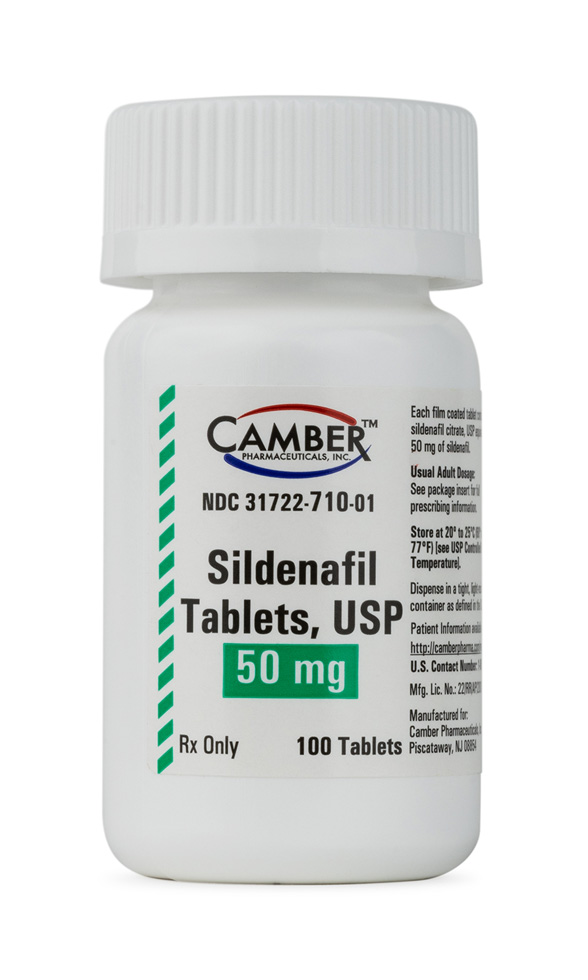
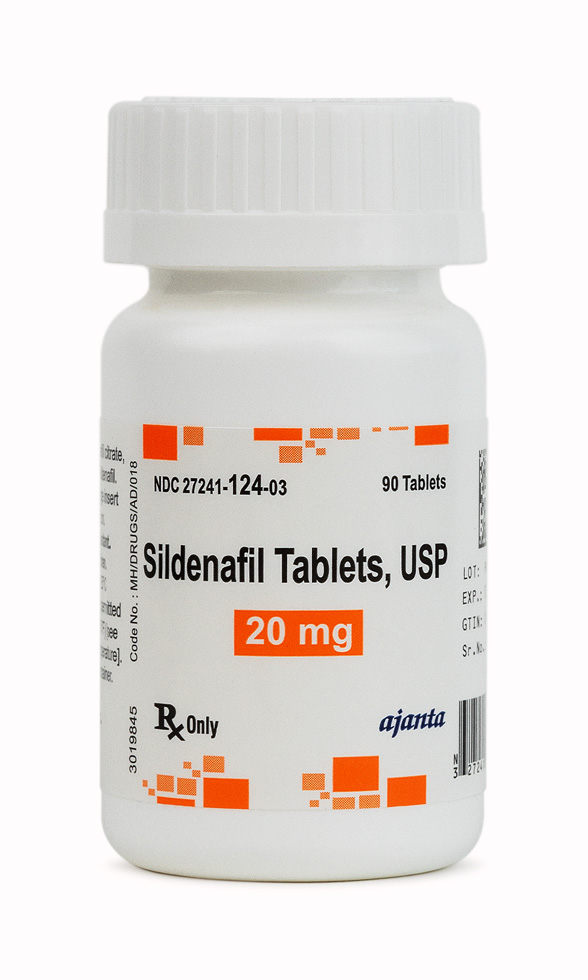
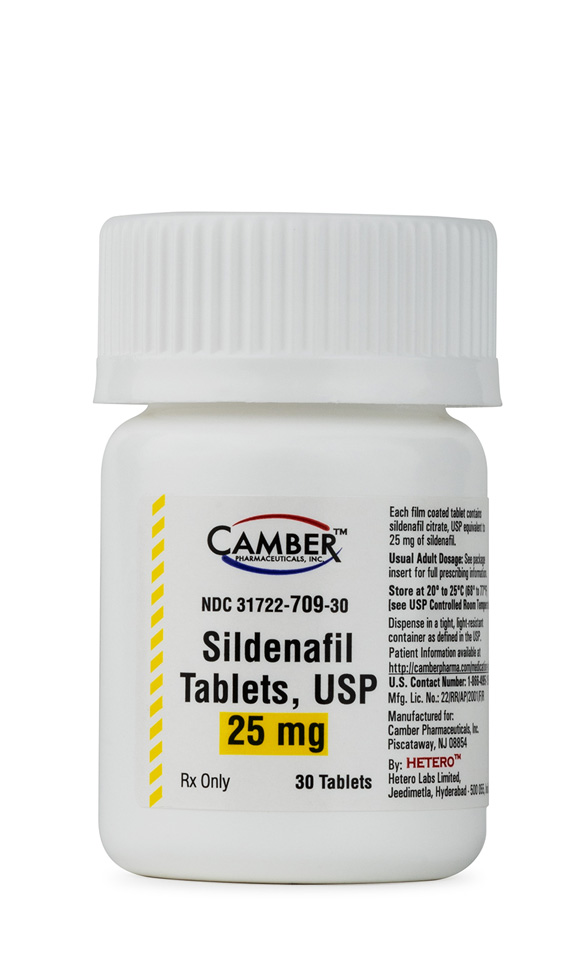
 Sildenafil ODT
Sildenafil ODT Sildenafil / Tadalafil ODT
Sildenafil / Tadalafil ODT Sildenafil / Apomorphine HCl Troches
Sildenafil / Apomorphine HCl Troches Sildenafil / Testosterone Troches
Sildenafil / Testosterone Troches Sildenafil / Oxytocin ODT
Sildenafil / Oxytocin ODT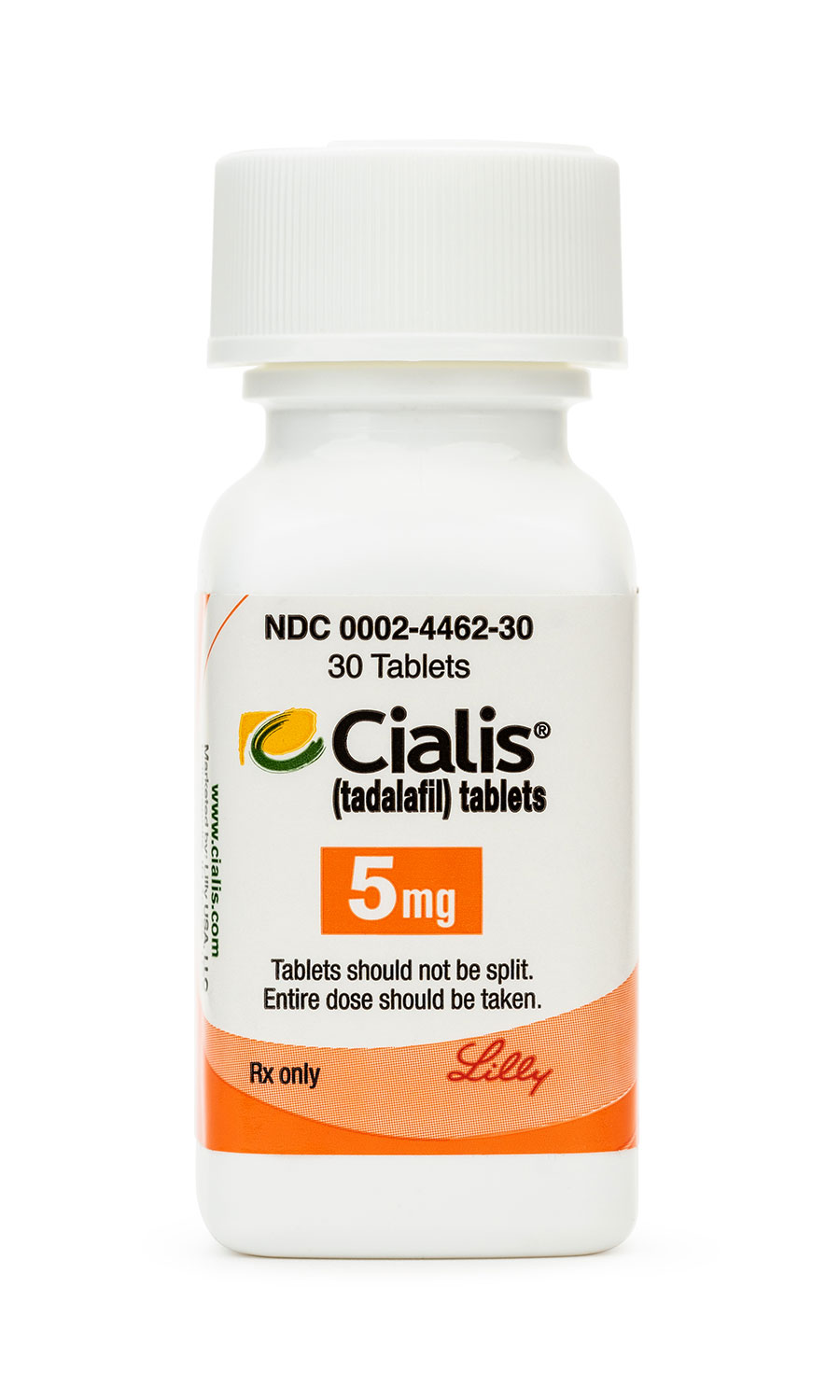 Tadalafil Tablets
Tadalafil Tablets Tadalafil Troches
Tadalafil Troches Vardenafil ODT
Vardenafil ODT Tadalafil ODT
Tadalafil ODT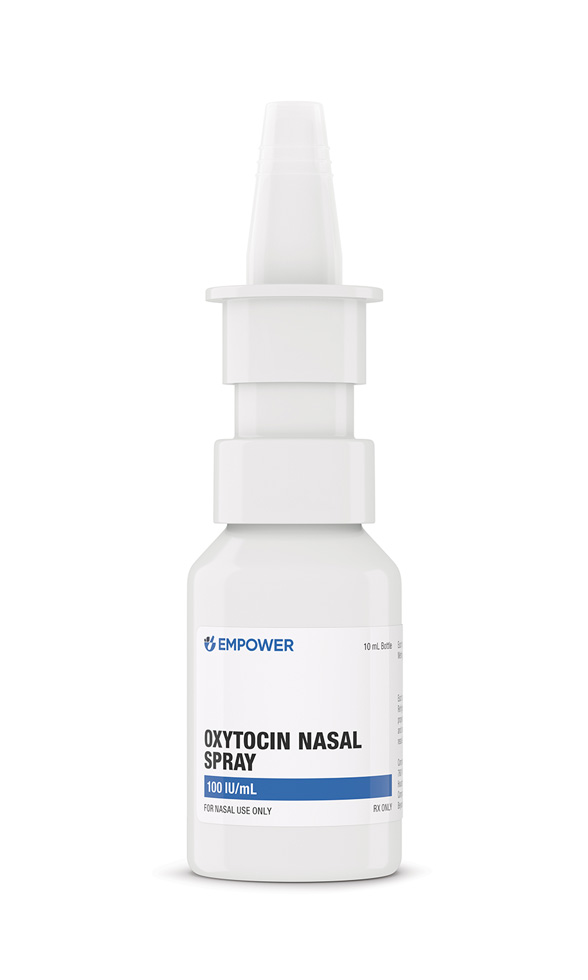 Oxytocin Nasal Spray
Oxytocin Nasal Spray